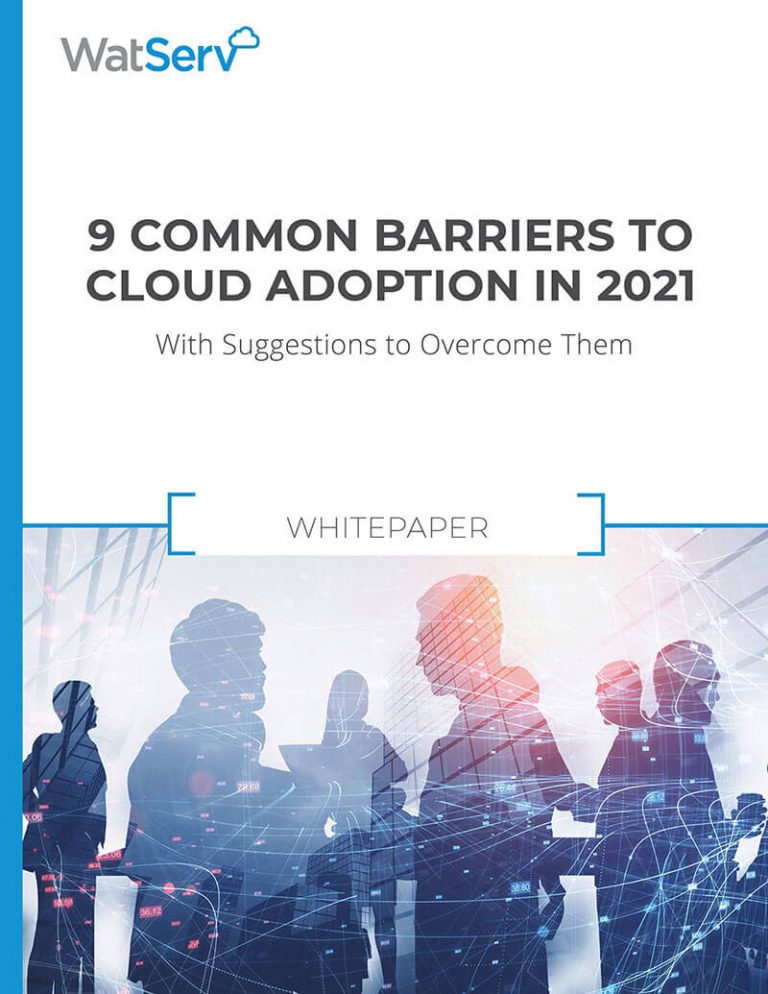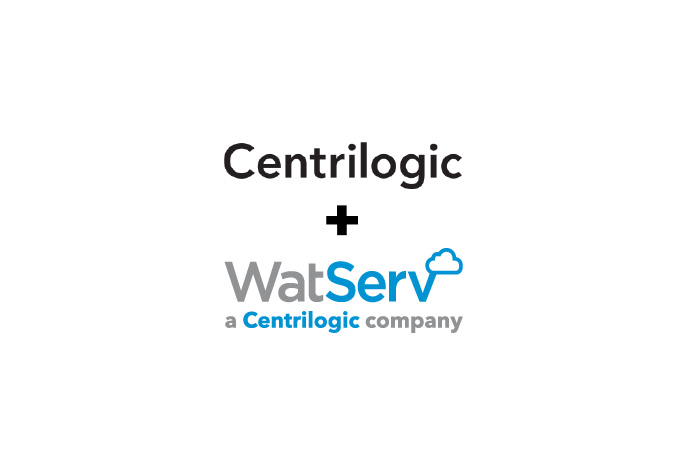The 8 Biggest Barriers to Cloud Adoption (with Recommendations to Overcome Them)
WatServ had the opportunity to attend and exhibit at Microsoft Ignite The Tour Toronto in January 2020. Over the course of the event, we asked attendees who visited our booth to identify their number one hurdle when it comes to cloud adoption. Below is a summary of the top eight issues reported, along with recommendations from our team on how to address them.
Top 8 Challenges to Cloud Adoption:
1. Insufficient Training
Organizations are struggling to train their employees on new technologies and to encourage adoption.
Recommendations to address this challenge:
A great place to start is with online learning and training resources provided from organizations like Microsoft and Google. For instance, Microsoft Learn allows employees to enhance their skills and achieve industry certifications on their own schedules. These types of online trainings usually have learning paths, from beginner to advanced, with avatars to track progression.
Another method is to deploy champions across your organization whose role it is to coach employees and drive adoption of new technologies. To complement this, your company can put motivational parameters around the framework to further incentivize skills development and cloud adoption.
2. Complexity Due to Multiple Locations and Divisions
Siloed IT infrastructure, systems dispersed across various locations and challenges with collaboration are common challenges facing organizations.
Recommendations to address this challenge:
Begin by analyzing the current state of your company’s technology delivery processes, organizational model, capabilities and other factors to identify improvement opportunities. After that, you can design a future state model incorporating value network design principles, adaptive organizational structure principles and agile best practices.
In addition, providing coaching and support can help your team adopt improved delivery techniques and methods to solve immediate problems.
Finally, in the longer term, implementing cross-functional teams can be helpful for supporting better collaboration and integration, while also avoiding shadow IT.
3. No Strategy, So No Action
With budget constraints and competing projects, the focus of many organizations is solely on maintaining the status quo. New technologies and ways of adopting them are put on the backburner until they are deemed to be truly necessary. Deployments, migrations and implementations are put off because these processes can take weeks, months or even years to complete.
Recommendations to address this challenge:
IT should focus on demonstrating progress by developing an incremental working product. If they wait for the “big strategy” to come along, it may never happen or may not be delivered as planned. Instead, by focusing on low hanging fruit first, IT can build momentum and showcase the added benefits of the cloud at critical moments. Together, this can change hearts and minds and pave the way for the introduction of a larger strategy.
Another approach is to create a roadmap that is divided into several smaller projects and achieved incrementally. Each smaller project can provide its own benefit, which eventually accumulate into a much larger impact. Projects can be accomplished throughout the year without burdening financial resources.
4. Worries About Data Governance
Although this can apply to many industry verticals, data governance is usually of most concern for government agencies and those in the public sector. There are many myths around this topic, spurred primarily by misinformation.
Recommendations to address this challenge:
There is a widespread belief that the cloud cannot protect information. This, for the most part, is not true. In fact, for companies that cannot keep up with regulatory changes and internal compliance, the cloud can make it easier. Hyperscale providers, like Microsoft, Google and Amazon review their governance frameworks regularly and can help guide you through the compliance process. They also offer the tools that can help your organization stay in compliance, such as DLP, data classification labels, encryption and so on. Furthermore, their guidance is written in plain language, making it easy to understand for you and your compliance specialist. Finally, public cloud datacenters hold more certifications and security measures than most private cloud or on-premises environments.
As an example, making your organization’s data center PCI-compliant in an on-premises scenario is not particularly easy. However, the cloud can simplify the process. Similarly, if you want to implement capabilities like PIM (Privileged Identity Management) in an on-premises datacenter, it is complex. With the public cloud, on the other hand, it becomes easier. There are still actions needed on the user’s end, and the cloud can’t account for all compliance requirements in all scenarios, but it does offer unique benefits for many customers.
5. Worries About Data Sovereignty
This concern is felt primarily by the public sector, government, military and defense organizations – organizations that are heavily regulated and that face strict compliance rules. Data sovereignty rules often stipulate that data must be stored within the country and accessed by citizens.
Recommendations to address this challenge:
While data sovereignty requirements might have been challenging to manage in the cloud several years ago, both Microsoft and Google have since expanded their datacenters within Canada, and they continue to add more every year. For instance, Microsoft recently announced the availability of more zones in Central Canada.
Furthermore, data can be restricted to specific geopolitical areas, making it easy to determine exactly where your data is. This, combined with the fact that hyperscale providers must pass heavy auditing processes, provides increased peace of mind. In fact, the Government of Canada recently chose Microsoft Azure, demonstrating that the days of data sovereignty worries are coming to an end.
6. Challenges with Cost Governance
Some companies hesitate for cloud adoption because they are worried their costs will increase or that they will over-provision.
Recommendations to address this challenge:
Despite these worries, many companies that go to the cloud discover that cost governance is easier there. That is because cost management features of the cloud allow you to set budgets, make chargebacks to internal business units, receive alerts when a limit is reached and so on. For instance, you can set up a predefined rule that can turn off or restrict the use of a service when they pass a certain threshold.
By providing access to data analytics, the cloud enables companies to better predict their costs over several years. Also, Microsoft and Google offer various discounts for upfront payments and so on, which can lead to overall cost savings.
7. Analysis Paralysis
Sometimes a major roadblock to cloud adoption stems from simply too many options. Over-thinking or over-analyzing options can make it difficult to choose between Azure, Google Cloud Platform, AWS, on-premise and private cloud.
Recommendations to address this challenge:
As a starter, it’s important to remember that most customers are already in a multi-cloud or hybrid cloud scenario. For enterprise customers, Microsoft’s cloud platforms are likely being utilized in some form or fashion as the primary service due to existing relationships and legacy technology integrations with Active Directory and other business applications.
It’s also important to remember that all of the top three providers – Microsoft Azure, Google’s GCP and Amazon’s AWS – have cloud compute capacity and scale on demand.
Here are some key areas to examine when assessing their offerings:
- Depth and breadth of service – All of the major providers offer a vast range of services, from compute and containers to AI and ML, but if you have specific current or future business needs, you should compare offerings to see which provider best meets them.
- Geographic needs – All three of the top providers have a global presence, with regions across most continents. However, some organizations have specific geographic restrictions due to factors like data residency or network latency requirements. If you are one of these organizations, doing an assessment of all providers is important.
- Hybrid cloud – All three of the major providers enable hybrid cloud, but evaluating their individual capabilities is important to see which is the best fit. Some organizations that have a substantial legacy footprint will need to integrate with the public cloud for seamless management of identity and security.
If your organization is having difficulty choosing an ideal scenario, cloud consultants (like our team at WatServ) can help identify your ideal future state and make the leap with confidence.
8. Complexity with Current Workloads
For many companies, a major worry is whether their current workloads will run well in the cloud. This concern can be a major inhibitor to cloud adoption.
Recommendations to address this challenge:
To begin, an assessment should be conducted to confirm what should go to the cloud and how best to get it there. Sometimes it’s a simple lift and shift, other times it will involve a rebuild. The key is to assess accurately, do a proof of concept and, if needed, consult with external cloud experts to discover workarounds or alternate solutions.
However, by not moving forward due to unknowns, you may be putting your business at risk. Relying on old technologies usually means decreased productivity, increased security concerns, lowered performance and potential end of support from the vendor.
Are you struggling to achieve cloud adoption? Does your organization need help getting to the cloud? If so, WatServ can help. Schedule a time to speak with our cloud experts today and get to the cloud with clarity.

WatServ demonstrates best-in-class capability and market leadership through proven technology and customer commitment.
About
WatServ is an IT solutions provider that helps organizations digitally transform through cloud technologies and managed services.
Serving clients as a trusted advisor since 2006, WatServ provides experience-tested, strategic solutions across all stages of the digital transformation journey. Clients choose WatServ to migrate infrastructure and applications to the cloud, secure critical data, implement disaster recovery, deploy virtual desktop, enable data-readiness for productivity solutions and manage IT environments.
Our clients span a broad range of industries, and we’re a global supplier of IT services for many Brookfield Portfolio Companies. To help our mid-size clients, we provide scalable offerings that simplify cloud adoption and drive business optimization. For enterprise clients, we co-create cloud solutions that enable stability and efficiency for complex IT tools and processes.
With more than 15 years of experience, WatServ has a track record of delivering quantifiable business results and a superior client experience. Ranked as one of Canada’s Top 100 Solution Providers for the last three years in a row, WatServ is always on.

